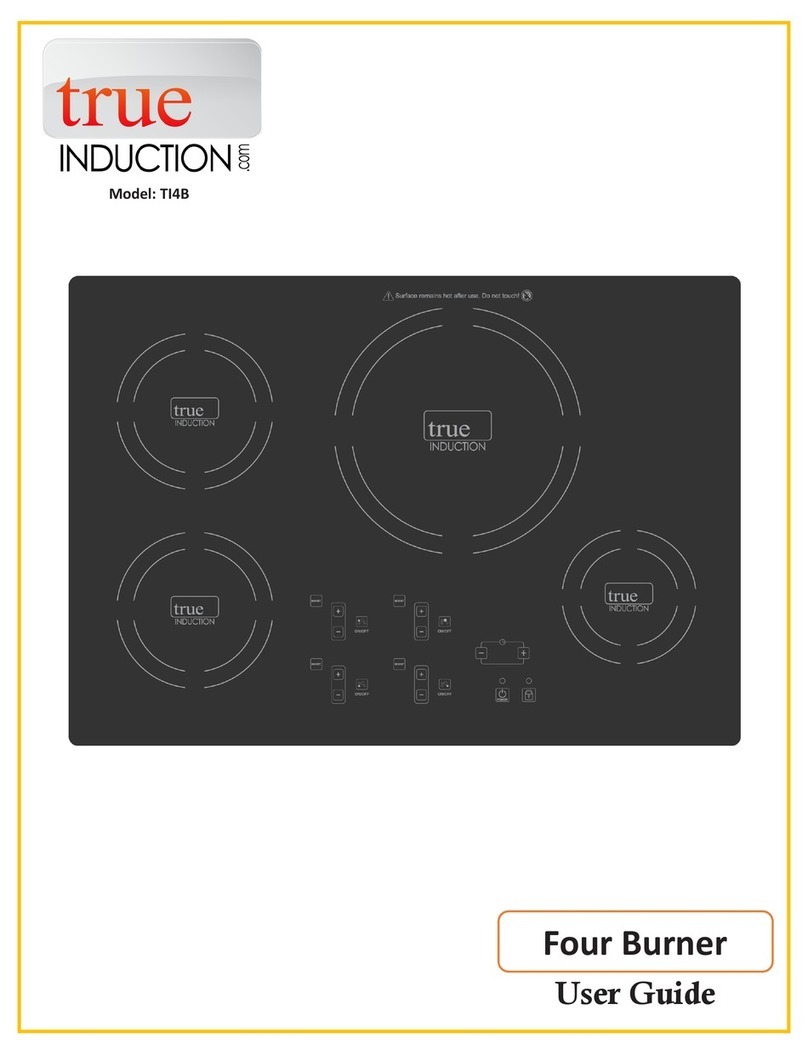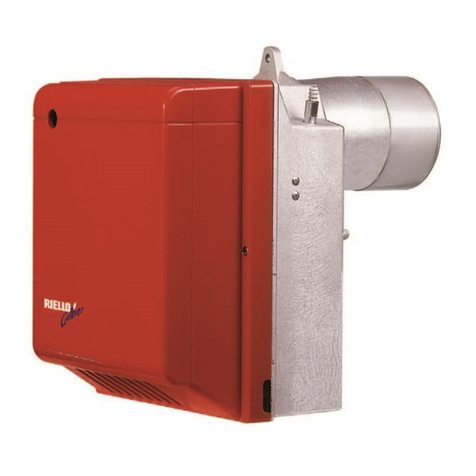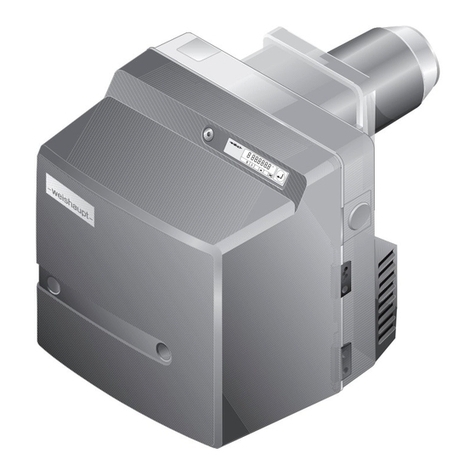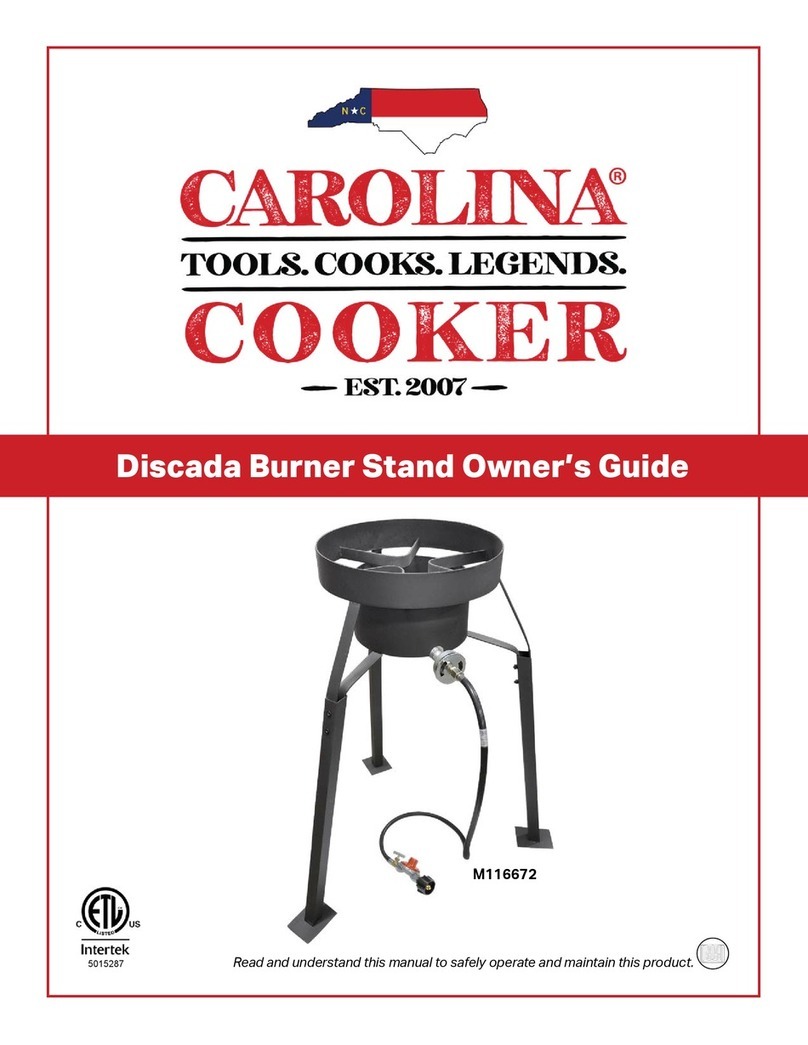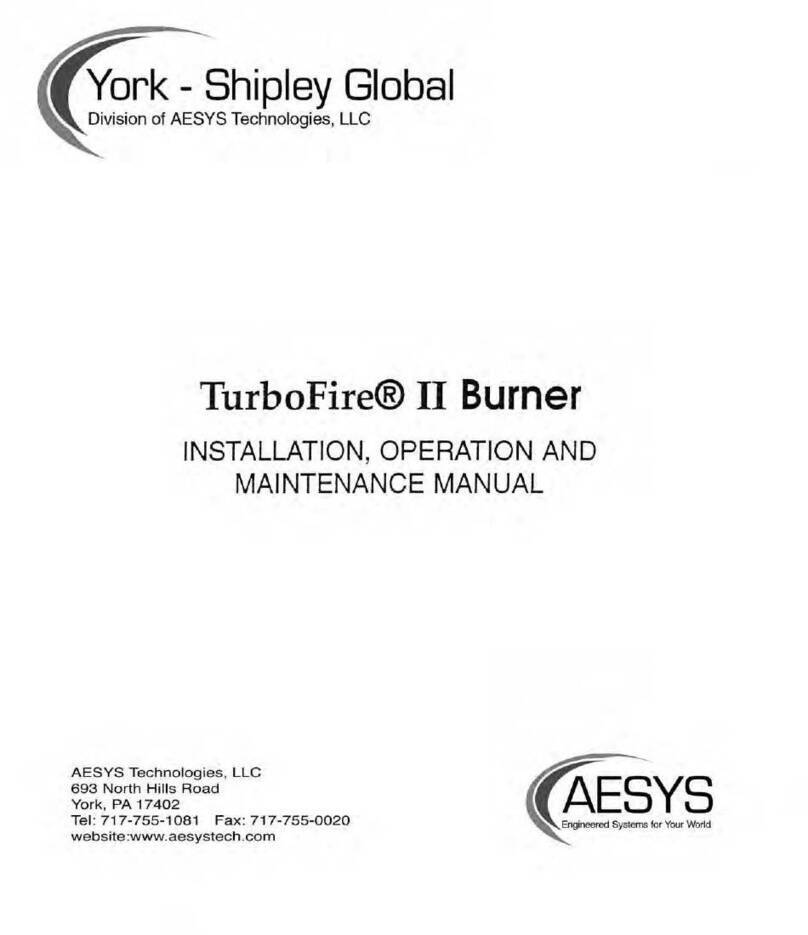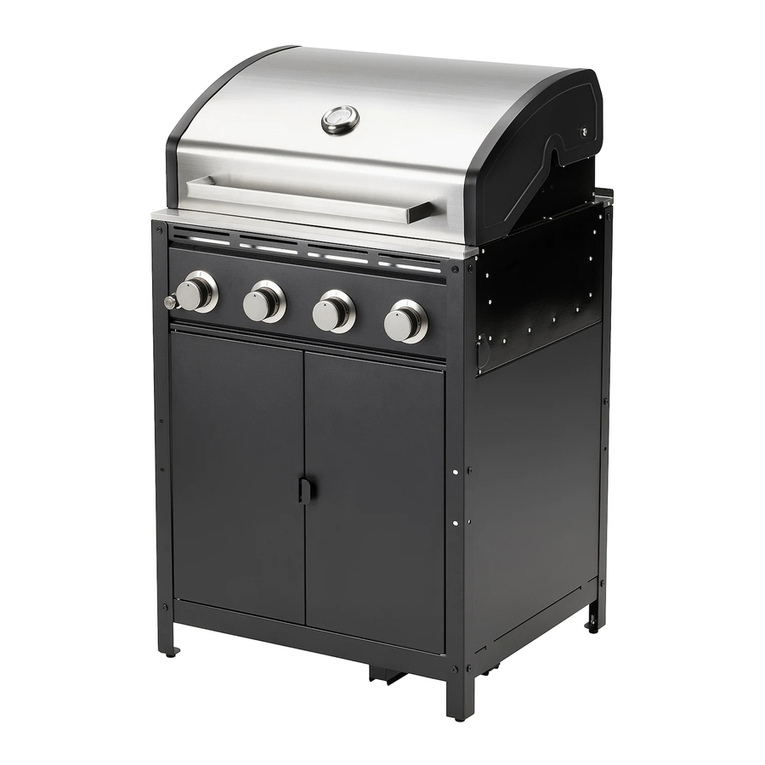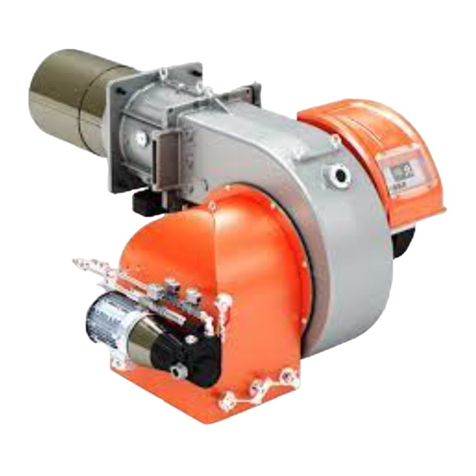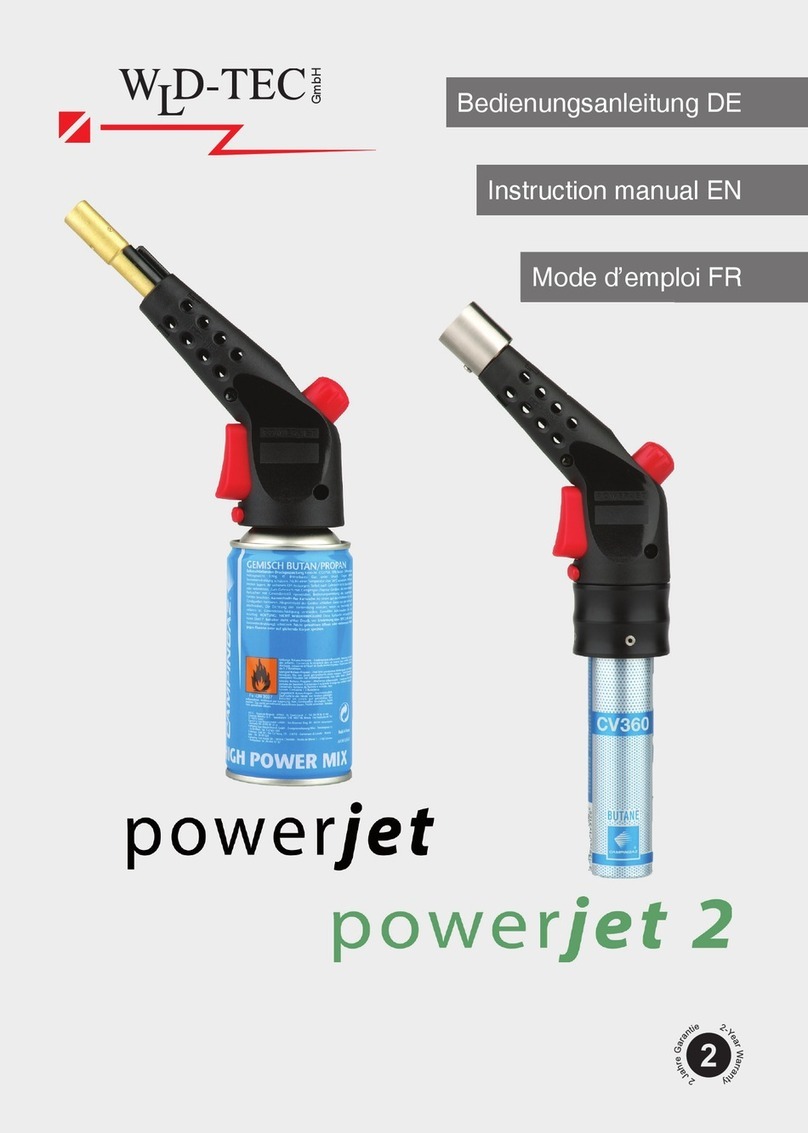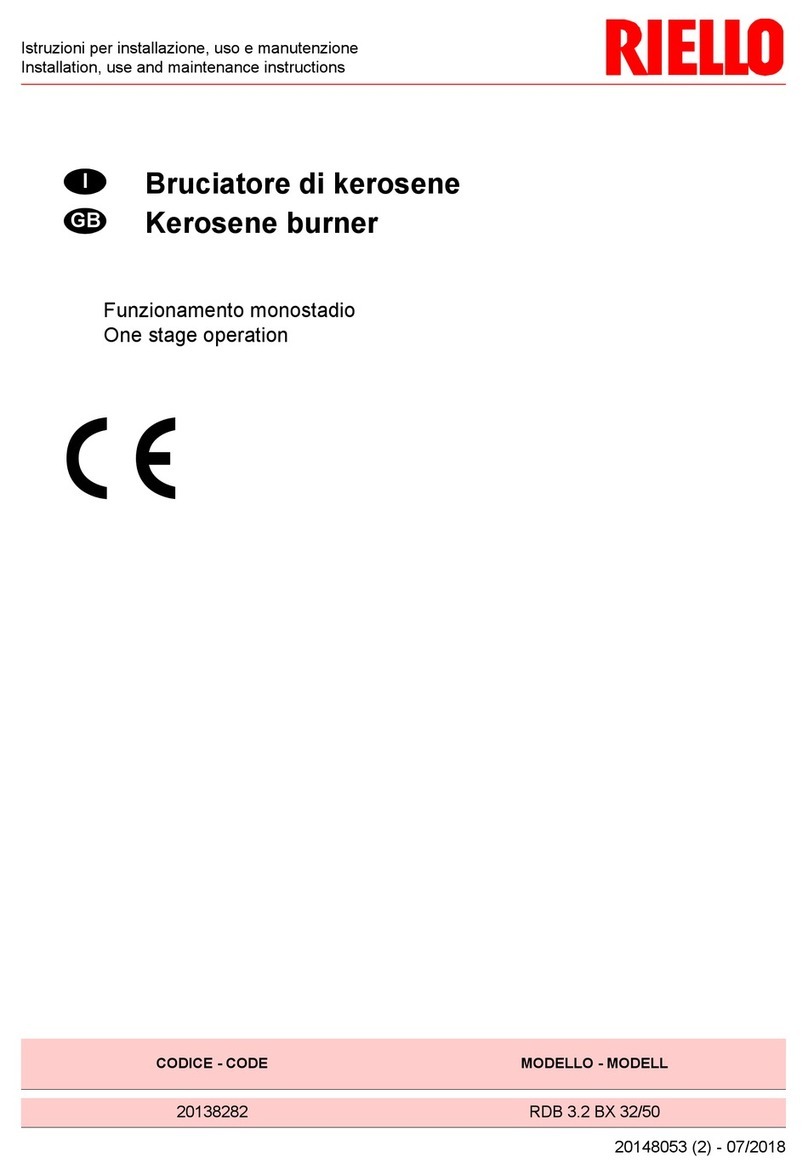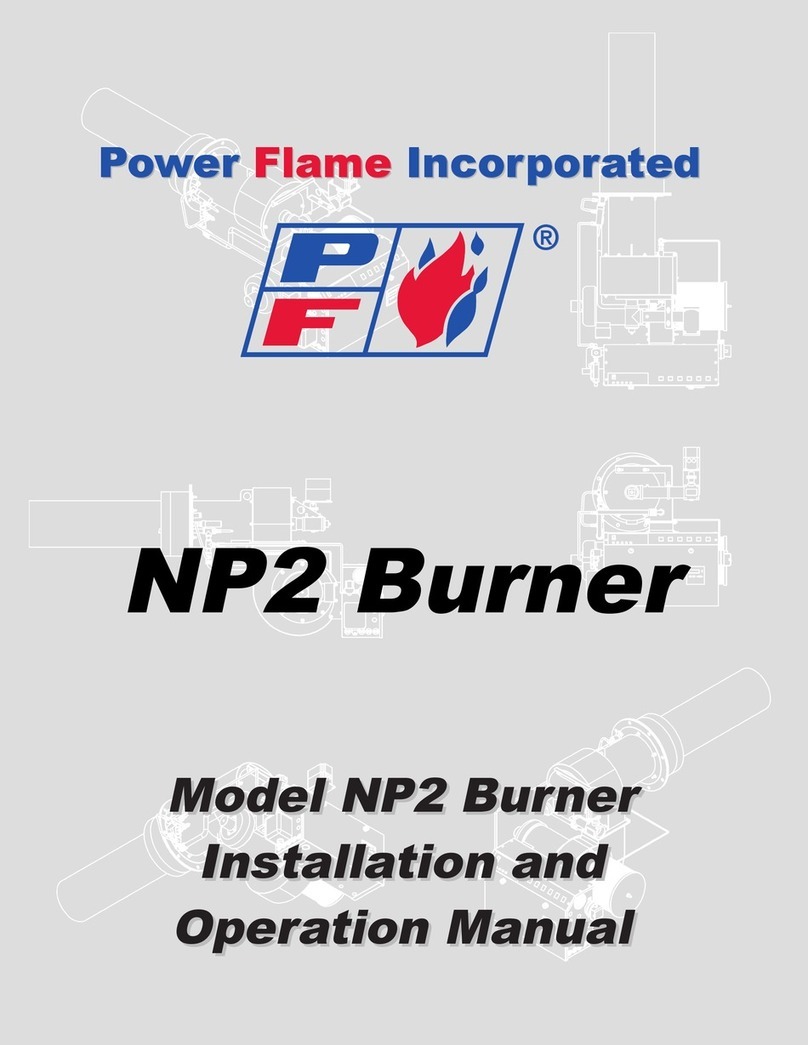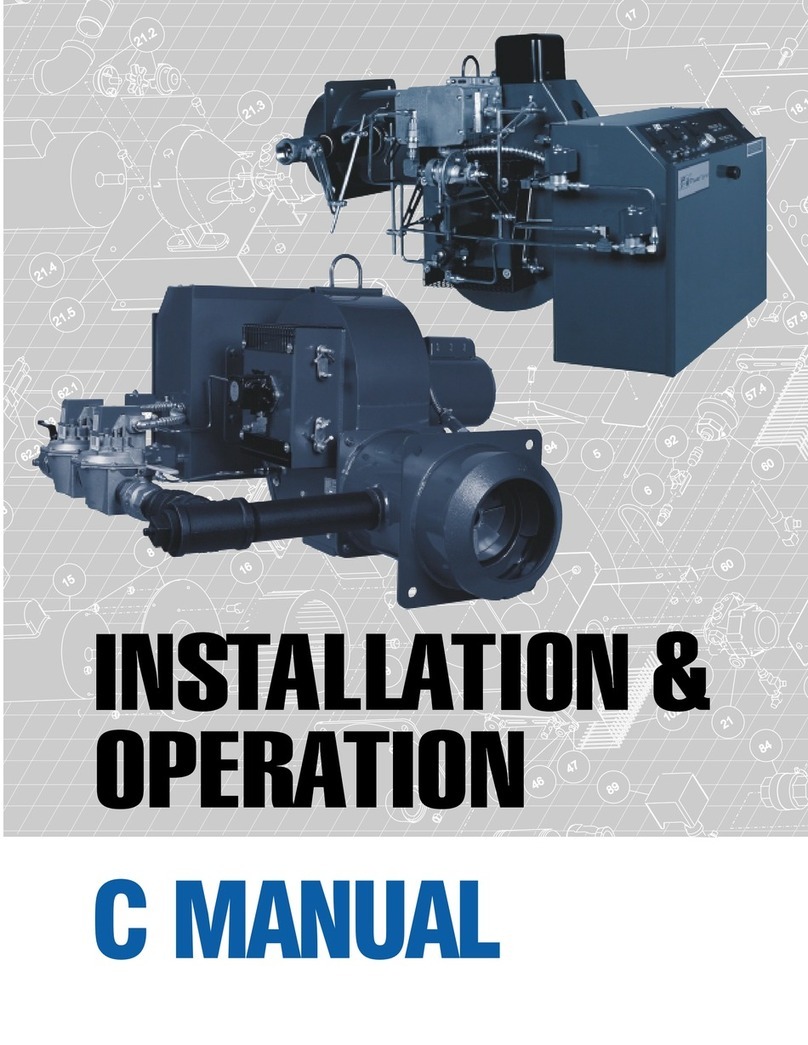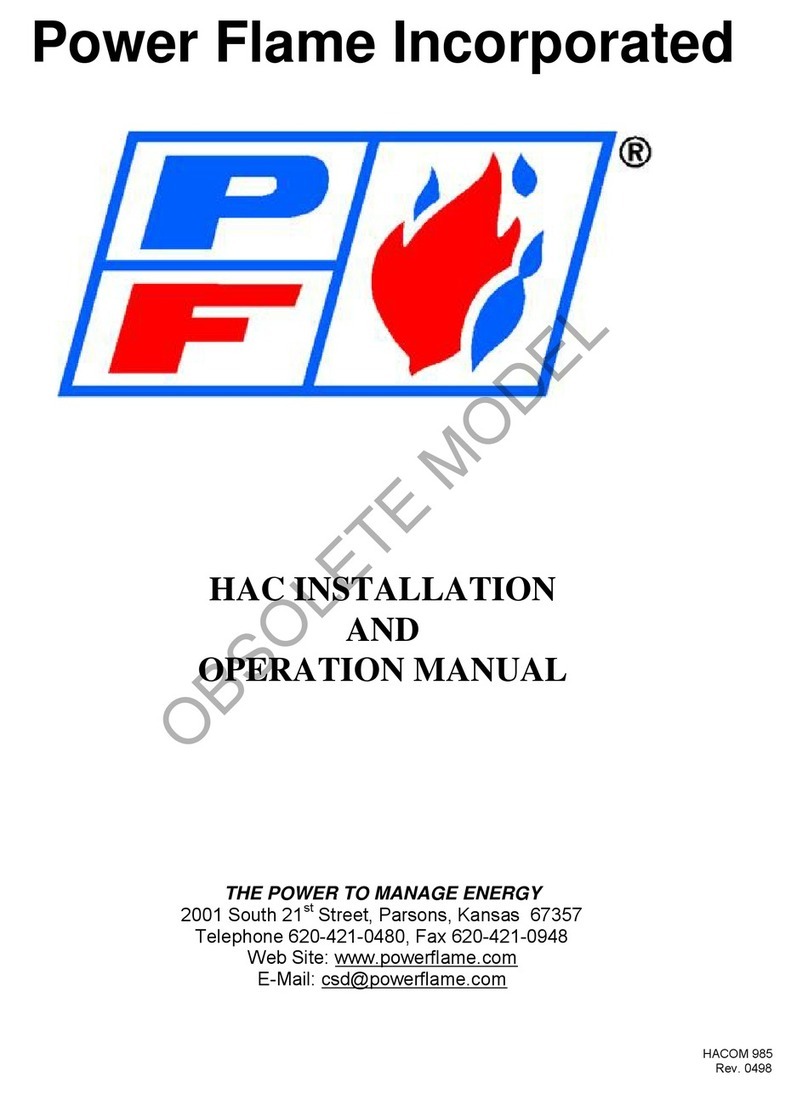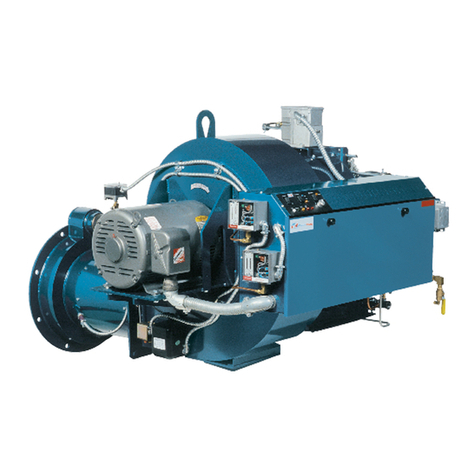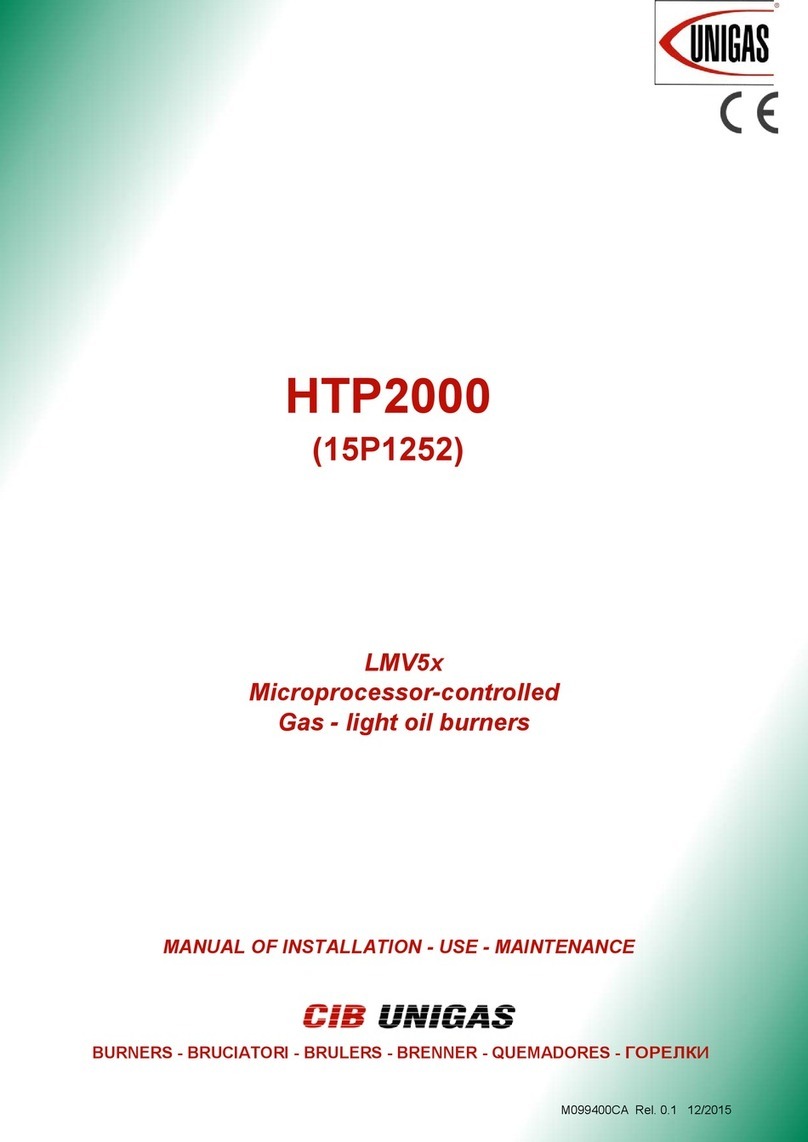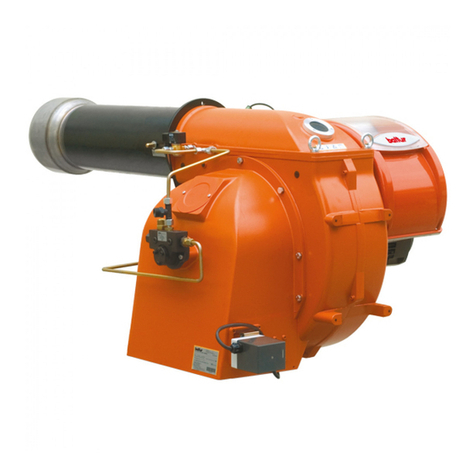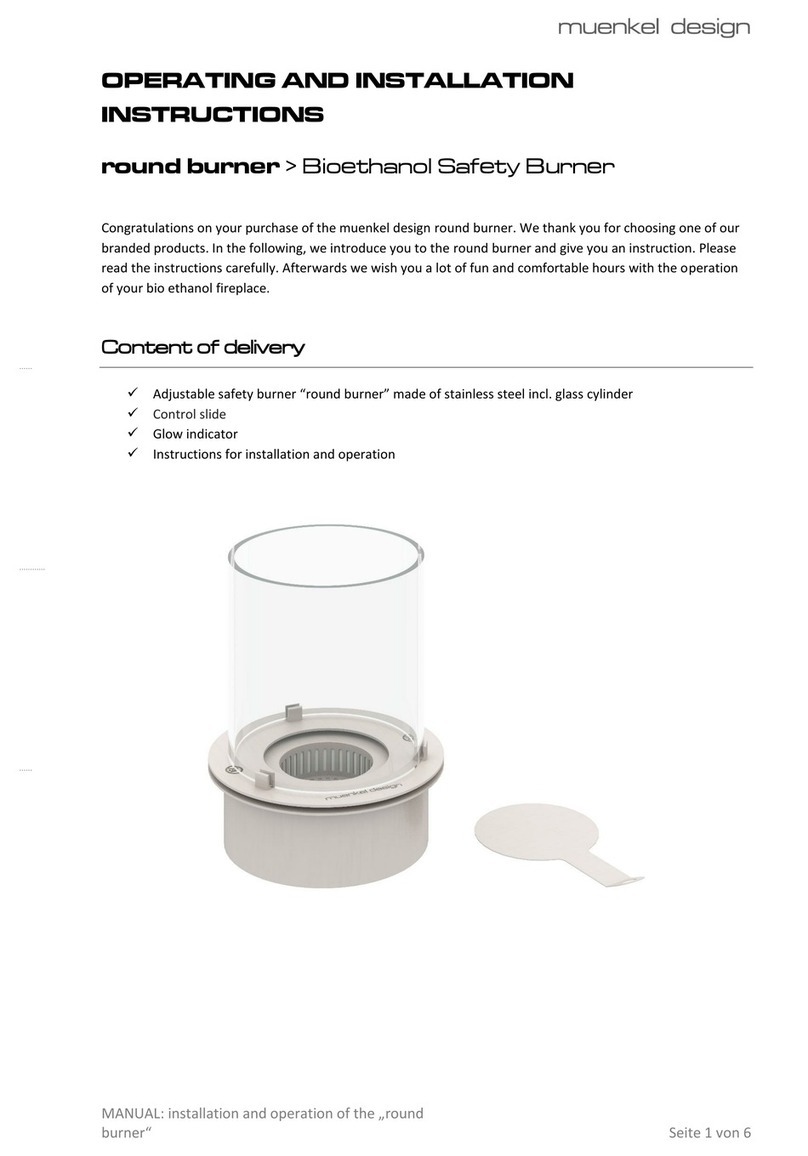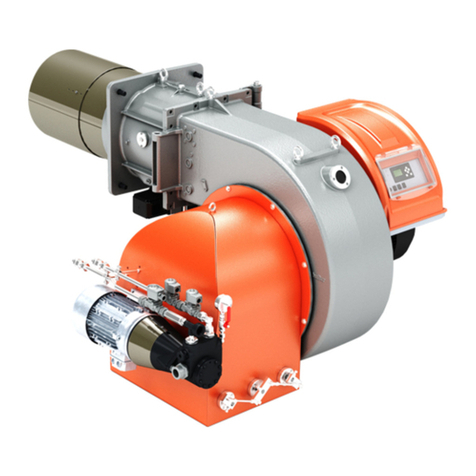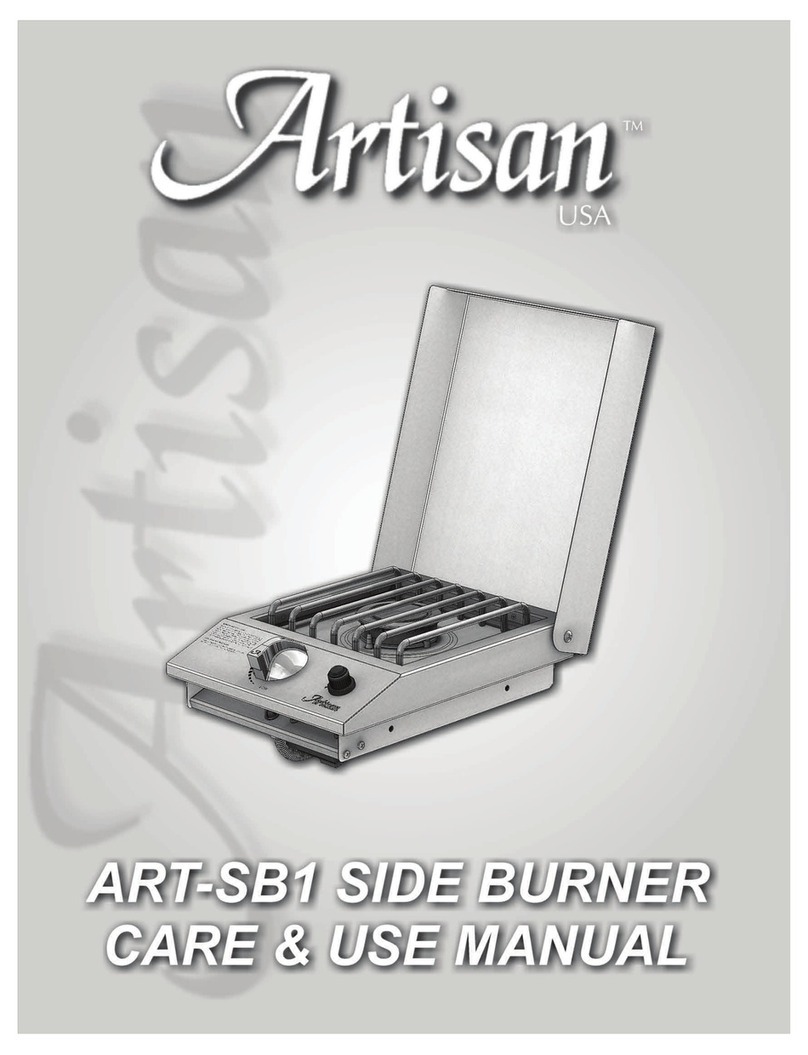
1. GENERAL PRODUCT INFORMATION
1.1 Principle of Operation
1.1.1 The Power Flame Model EVO®Burner, U.S. Patent #11,585,528, is a forced draft, partial premix/nozzle
mix, staged gas burner designed for Sub 30 PPM NOx emissions without the use of Flue Gas Recirculation,
while maintaining 3% O2, when firing with typical Natural Gas fuel. The Model EVO®burner is listed and
labeled by Underwriters Laboratories, Inc. up to EVO800. The combustion air is furnished by an integrally
mounted combustion air fan. The Power Flame packaged combustion system can be operated under
positive or negative furnace pressures with clean, efficient combustion in a wide range of combustion
chamber conditions.
1.1.2 The Power Flame Model EVO®burner is a totally packaged and factory tested combustion system offering
single unit responsibility. The package incorporates accurate control of the fuel-air ratio throughout the firing
range with the resultant controlled flame patterns and clean combustion for maximum efficiency.
1.1.3 Combustion air flow is controlled by a multi-louvered damper assembly. Combustion air is supplied by an
integral motor-driven blower, which discharges into the burner blast tube assembly.
1.1.4 The air-fuel ratio is established at the time of start-up and proven with combustion test equipment to provide
the lowest practical oxygen and lowest NOx with a clean flame. Firetube applications typically have bent
lean extensions as depicted in Figures 1a-1c while watertube applications typically have straight lean
extensions.
1.1.5 A Flame Safeguard Controller programs the firing cycle. The operating cycle is sequenced to ensure normal
and safe conditions before fuel can be introduced into the combustion chamber area. The complete firing
cycle is supervised to ensure that ignition of main flame is properly established and maintained. Flame
monitoring is provided by a scanner as required by code.
1.1.6 The limit circuit includes the operating limit control to maintain set operating pressure or temperature, as
well as a high limit control to guard against excessive pressure or temperature. Low water and other similar
safety controls can be interlocked into the burner control system to satisfy specific job and/or code
requirements.
1.1.7 The control circuit is normally 120 volts. A control circuit transformer may be furnished to provide the 120
volts control circuit for polyphase motor voltage applications.
1.1.8 The pre-wired Control Panel is mounted and wired as an integral part of the burner in accordance with
recommendations of Underwriters Laboratories, Inc. and The National Electrical Code. Components are
wired to numbered terminal strips. Panel and burners are factory fire tested before shipment.
Comprehensive wiring and gas and/or oil piping diagrams are furnished with each burner in accordance
with individual job or application requirements. Wall mounted or free standing control panels are also
available.
1.1.9 Power Flame Model EVO®burners are available with control systems to comply with the requirements of
Factory Mutual, Industrial Risk Insurers and any special state, municipal, local and utility company codes,
including New York City Department of Buildings (MEA), NYC Department of Environmental Protection,
Commonwealth of Massachusetts, State of Connecticut Fire Marshall, Illinois School Code and others.
1.2 Unpacking and Handling
1.2.1 Power Flame Model EVO®burners are usually shipped as a unit with an integrally mounted, pre-wired
control panel. Gas train components may be pre-piped as an option or shipped loose for field mounting.
1.2.2 Uncrate the burner carefully and check all parts received against the computer generated Burner
Specification Sheets supplied by Power Flame. Components not mounted on the burner (shipped loose)
are designated with an L in the right hand column on the sheets. Claims on shortages or damage must be
immediately filled with the carrier.
1.3 Warranty and Spare Parts Information
1.3.1 Please refer to the Power Flame Terms and Conditions for our warranty policy.
1.3.2 Should a component fail, contact Power Flame Inc. or our Representative in your area and advise them of
the Serial Number of your burner. The burner as-built included with the installers packet includes a Bill of
EVO®Installation and Operation Manual
1


